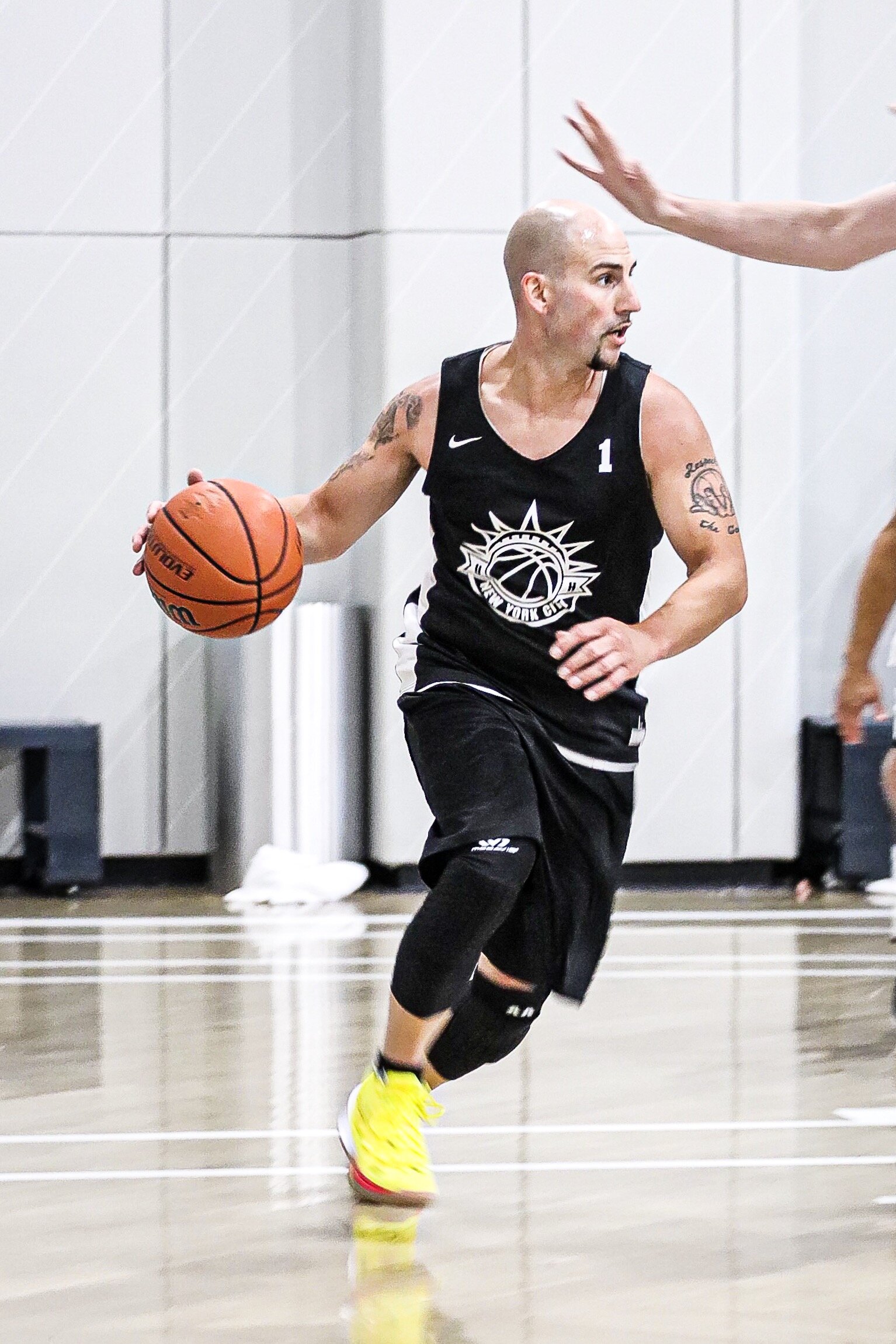Tips to improve your basketball dribbling
Dribbling is a key skill to master in the game of basketball. The better you can dribble the more opportunities you have for you and your teammates to score. A great goal to have is to be able to dribble the ball with either hand without looking down at the ball. Keeping your head up gives you the ability to see where your teammates are on the court and look at what the defense is doing.
Step 1: Dribbling Basics
A. Low stance
Spread your feet should-width apart. Bend your knee, drop your hips back and get in a low stance. Make sure your body is balanced giving you the opportunity to move quickly or change directions. Avoid bending at your waist.
B. Bounce the ball
Start with your dominant hand first and pound the ball into the ground, extending your arm and snapping your wrists to send the ball to the ground. Each time the ball returns to your hand, don’t catch it, push back towards the ground. Placement of your bounce should be in front of your body slightly to the side of the foot that is on the same side of your body as the hand you are using. You want your dribble to be quick, steady, and controlled.
C. Use your fingertips, not your palm
When you dribble it’s important to have good ball control. Using your fingertips gives you more control over the ball and the more control you have the less strength needed to keep it bouncing. Using your fingertips also allows you bounce the ball faster. Spread your fingers out across the surface of the ball for a wider, more even contact area. Try to keep the palm of your hand directly over the ball so it bounces up into your fingertips.
D. Ball height low
Do not bounce the ball too high, keeping your dribble low will improve your control but also makes it harder for the defense to steal it.
E: Protect the ball
Keep the ball safe by using your body and your non-dribbling arm to keep the ball shielded from defenders. Keep your body between your defender and the ball, never dribble the ball on the same side of your body as the defender is on.
F. Dribbling equally well with both dominate and non-dominate hands
A basketball player needs to develop dribble equally well with both hands. This increases their opportunities on offense and makes it harder for the defense to stop.
Step 2: Next Steps
A. Keep your head up
This is important skill in basketball, you need to be able to look at the defense and also see where your teammates are on the court. Practice dribbling without looking at the ball.
B. Know the rules
Know what you can/can’t do with the basketball while you are dribbling.
Traveling: Moving the ball without dribbling
Taking an extra step or shuffling your feet
Holding on to the ball while you walk or run
Moving or changing your pivot foot when stationary
Double Dribble: Two separate meanings
Dribbling with both hands at the same time
Dribbling, stopping your dribble, and then starting to dribble again
Carrying: Catching the ball with one hand and then continuing to dribble (without stopping the dribbling motion). Your hand makes contact with the bottom of the ball, then turns the ball over while dribbling.
C. Court awareness
Know where you are going to go and who is around you. The way you dribble the ball should change based on where other people on the court are. If you are in an open court (dribbling the ball down the floor with no defenders) you can dribble the ball in front of you. If a defender is close, you will want to protect the ball and dribble it to the side of your body so the defender cannot steal it. Good court awareness is also important to avoid dribbling into trouble. Look out for dribbling into double teams (two defenders), or into your own teammates.
D. Think ahead
Know what you are going to do with the basketball before you pick up your dribble. If you stop dribbling your options are to shoot or pass the ball. Remember once you stop dribbling you cannot start dribbling again.
E. Dribble with purpose
Reasons to dribble
To advance the ball up the court
To open up a passing lane, increased chance of pass completion and to help a teammate get open
To drive to the basket
To get open to shoot
To get out of trouble (defensive trap)
To run out the clock at the end of a game
Step 3: Advanced Moves
Here are a few moves to practice to give you separation from your opponent on the basketball court. We will break these down in future tutorials.
Crossover
Behind the back
Through the legs
Hesitation dribble
In-and-out dribble
Spin move
Trainer Tips
Start with stationary drills and work your way up drills that include movement around the court
Improve the strength in your hands, squeeze a stress ball or tennis ball to give you greater control while dribbling
Dribble with two basketballs
Setup a dribbling obstacle course using cones or props from your garage
Practice both hands
Practice dribbling with a tennis ball
Implement only the moves you have mastered into a game
Have a friend or parent guard you when practicing
Don’t worry if you mess up, get out of your comfort zone by pushing hard to try new things
Check out more tips from Ultimate Hoops Trainers here.
Share your workout on social with hashtag #KeepPlaying

